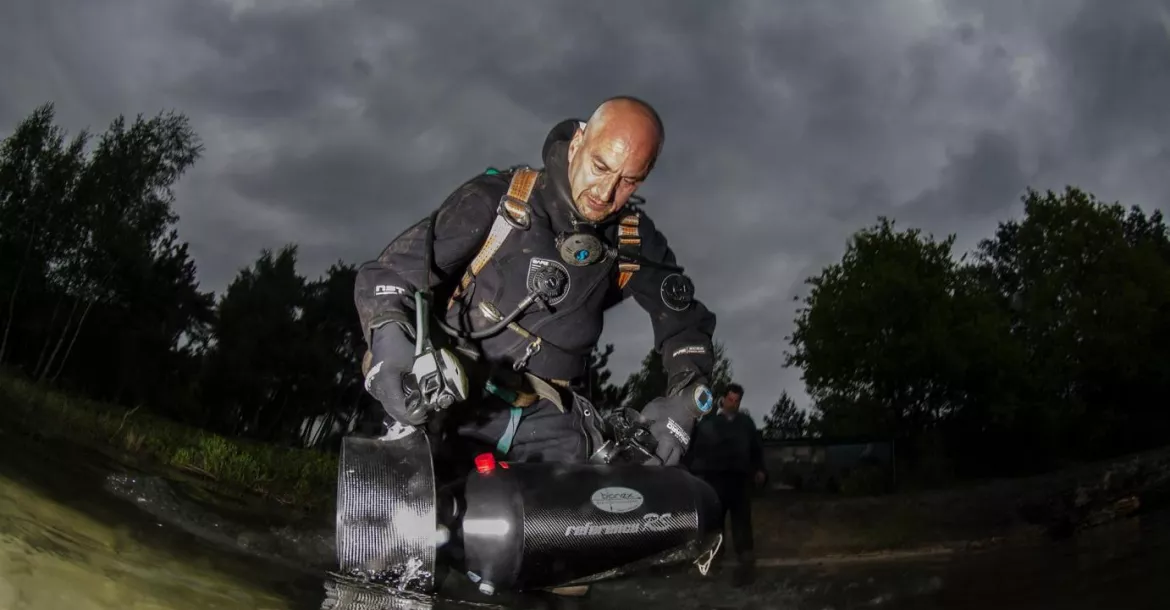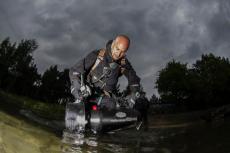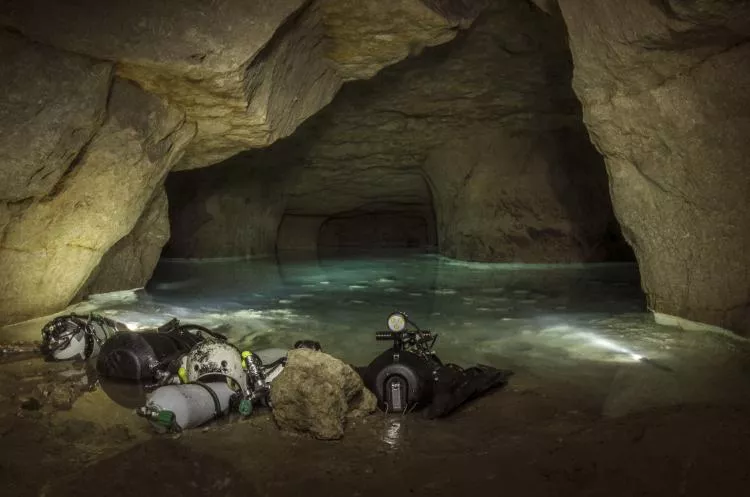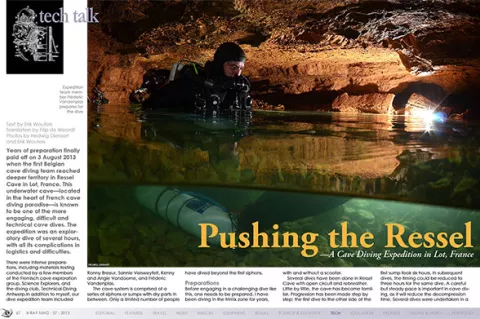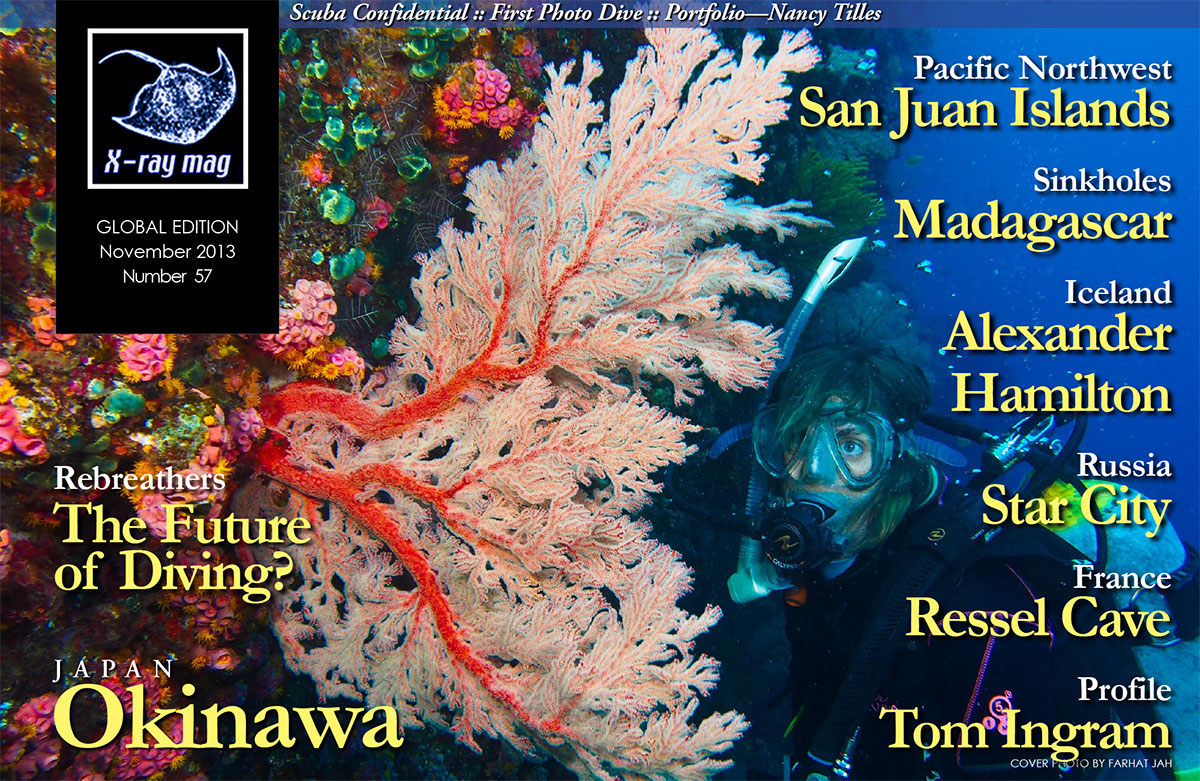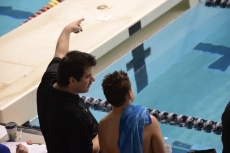Years of preparation finally paid off on 3 August 2013 when the first Belgian cave diving team reached deeper territory in Ressel Cave in Lot, France. This underwater cave—located in the heart of French cave diving paradise—is known to be one of the more engaging, difficult and technical cave dives. The expedition was an exploratory dive of several hours, with all its complications in logistics and difficulties.
Contributed by
There were intense preparations, including materials testing conducted by a few members of the Flemisch cave exploration group, Science Explorers, and the diving club, Technical Diving Antwerp.In addition to myself, our dive expedition team included Ronny Breeur, Sannie Versweyfelt, Kenny and Angie Vandoorne, and Fréderic Vandenplas.
The cave system is comprised of a series of siphons or sumps with dry parts in between. Only a limited number of people have dived beyond the first siphons.
Preparations
Before engaging in a challenging dive like this, one needs to be prepared. I have been diving in the trimix zone for years, with and without a scooter.
Several dives have been done in Ressel Cave with open circuit and rebreather. Little by little, the cave has become familiar. Progression has been made step by step; the first dive to the other side of the first sump took six hours. In subsequent dives, the timing could be reduced to three hours for the same dive. A careful but steady pace is important in cave diving, as it will reduce the decompression time. Several dives were undertaken in a time span of several years and was crucial to memorization of the site, reducing the time loss and increasing efficiency and fluidness of the dive.
The target was to get as far as possible into the cave. Physical conditions of the push divers would determine how far one could go beyond sump one. In this exploration dive, we got to siphon five!
The logistics
Inspiration rebreathers were used to keep the volume of breathing gasses to a limit. The gas mixes for the two push divers was a 10/60 diluent in three-liter bottles and pure oxygen. Open circuit baleout for sump one were placed by support divers Ronny Breeur and Sannie Verswyfelt.
The bailout included:
2 x 12L 300 bar oxygen at 6m deep
1 x 20L 240 bar 50/10 at 22m deep
1 x 20L 250 bar 20/40 at 1,100m from the entrance
At 1,100 meters, additional tanks were left behind:
12L 300 bar oxygen (with two wood logs attached to it to make it float)
80 cbf tank with air
40 cbf tank with air
2 scooters for redundancy
The gear left at 1,100 meters in siphon one would be picked up for the actual push through to carry out the crossing of sump one and all further siphons.
The crossing itself started with one CCR for each diver and also one scooter and one 20-liter tank with 15/45. After 1,100 meters, the other materials left behind would be picked up.
Four scooters were used: three Bonex and one Silent Submerge. What we didn’t know beforehand was that one scooter would not survive, and the other would be used until it was empty. Redundancy is a must!
The push dive
The start of siphon one is known to many cave divers; a lot of them have received their training there. Why? It is a relatively easy, wide entrance with good visibility. This first system is dived by most up to a distance of 400m where a well-known deep drop is located.
The primary aim of the expedition (...)
Published in
- Log in to post comments

